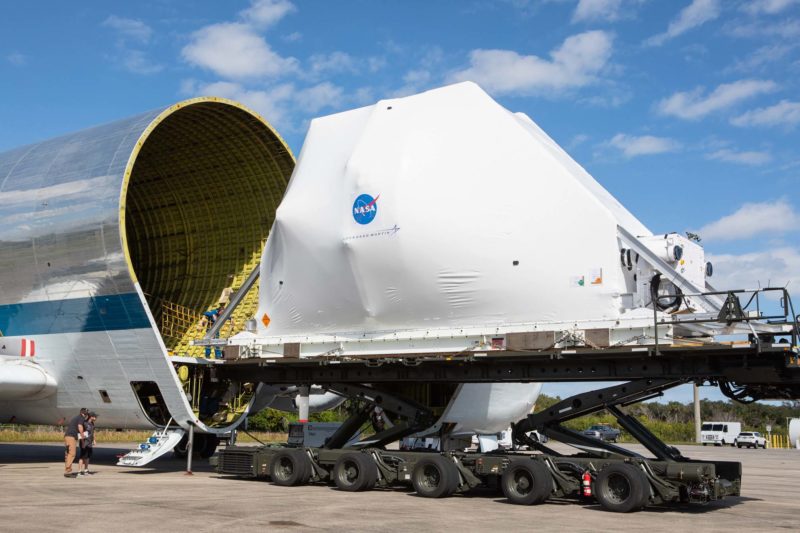Latest News

Orion CSM Load onto Guppy
The Orion spaceship transferred from the Kennedy Space Center to Plum Brook Station in Sandusky, Ohio, and is scheduled to arrive on Nov 26. Its destination the world’s largest thermal vacuum chamber, owned by NASA, where the hot test phase of several months will begin for the spacecraft.
A team of engineers and technicians from Airbus, the European Space Agency (ESA), Lockheed Martin and NASA are ready to put the spacecraft through simulations of extreme space conditions. The tests will be conducted in two phase. First there will be a 63-day thermal test. Orion’s electrical systems will be switched on and operated under vacuum and in temperatures which simulate the environmental conditions in space. During this phase, the spacecraft will be exposed to extreme temperatures from about minus 115 to plus 75 degrees Celsius to reproduce the conditions the spacecraft will be exposed to, when in direct sunlight and in shadow in space. The second phase is an electromagnetic compatibility test, which lasts about 14 days. Each electronic component emits a kind of electromagnetic field that can affect the performance of other nearby electronics. These tests ensure that the spacecraft’s electronics function properly while operating.
“With the tests, we will show that the spacecraft’s systems work as planned and at the same time ensure safe operation for the astronauts on future missions – both on the ground and on board,” says Matthias Gronowski, Chief Engineer for the European Service Module that Airbus is building for NASA on behalf of ESA.
Get the latest Via Satellite news!
Subscribe Now